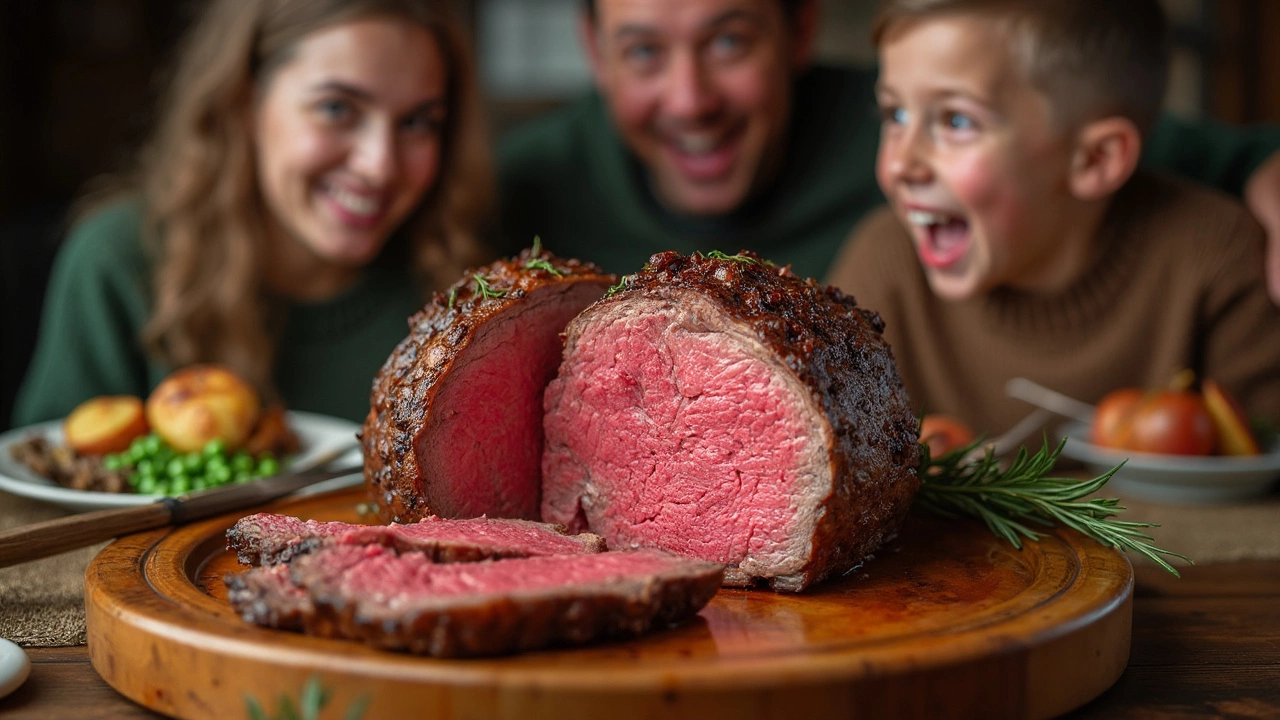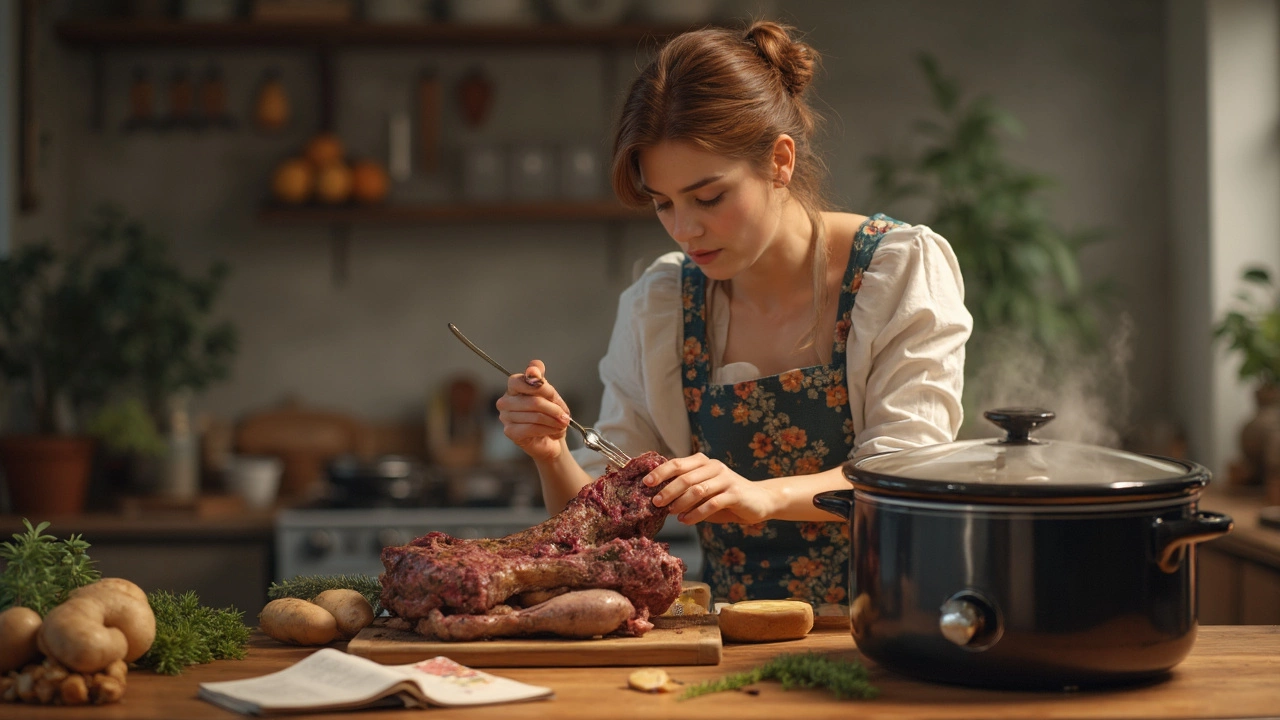Ever spent all day waiting for your slow cooker to turn that hunk of beef into a tender masterpiece, only to chew through a piece that’s tougher than shoe leather? You’re not alone. Plenty of folks end up with beef that’s just too chewy, even though the slow cooker is supposed to do all the work for you.
Most times, it’s not about bad luck or even your cooking skills. It often comes down to a couple of common things—wrong cut of meat, funky cooking times, or maybe you just set it on the wrong temperature. Seriously, you’d be surprised how much these little things can mess with your dinner.
Here’s a fact not everyone knows: Some beef cuts actually get tougher before they get tender. If you peek too early, you might think it’s ruined, but with slow cookers, patience pays off. And then there’s the liquid situation—using too much or too little messes with the texture, too. Crazy, right?
If you want beef that breaks apart with a spoon instead of fighting your fork, you’ll want to pay attention to what comes next.
- Common Mistakes With Slow Cooker Beef
- Choosing the Right Cut
- Understanding Cooking Times and Temperatures
- Pro Tips for Tender Beef Every Time
Common Mistakes With Slow Cooker Beef
Even though slow cookers make life easier, there are a few mistakes that almost guarantee tough, chewy beef. Not all beef is created equal, and a lot of what goes wrong starts even before you press the button.
The biggest mistake is picking the wrong cut for your slow cooker. Lean cuts like sirloin or round steak are going to dry out and stay tough, no matter how long you cook them. You want the ones with lots of connective tissue and marbling. You’ll see why in a second.
Another goof is cranking the heat too high. Slow cookers work best on low. If you try to rush things on “high,” you might end up with overcooked outsides and chewy insides. Remember, slow cookers are about time, not speed.
People also get tripped up by too little liquid—or sometimes too much. Without enough moisture, beef won’t break down. Too much liquid? You’ll end up boiling, not braising, and all that extra steam messes with the texture.
Then there’s the habit of constantly lifting the lid to check on things. Every peek lets out heat and drops the temperature, tacking on another 20-30 minutes to the cooking time each time you do it. It can keep the slow cooker beef from ever getting to the right temp for breakdown.
- Wrong beef cut (lean instead of tougher cuts like chuck or brisket)
- Cooking on high instead of low
- Not enough or too much liquid
- Frequently removing the lid
- Not letting it cook long enough for collagen to break down
Check out these trouble points and average cooking times for common beef cuts in the slow cooker:
| Beef Cut | Best for Slow Cooking? | Average Time on Low |
|---|---|---|
| Chuck Roast | Yes | 8-10 hours |
| Brisket | Yes | 9-11 hours |
| Round Steak | No | 6-7 hours (still tough) |
| Sirloin | No | 6-8 hours (can dry out) |
The real trick? Don’t get impatient. Cooking beef low and slow is the only way those tough fibers melt into fork-tender goodness.
Choosing the Right Cut
The biggest reason for tough beef in your slow cooker beef stew or roast? The cut of meat. Some pieces are just made for slow cooking, and others are meant for fast grilling. That’s not marketing—it's how the muscle works! Cuts like chuck roast, brisket, and short ribs are packed with connective tissue and fat. When they cook low and slow, all that stuff breaks down and turns the beef buttery and tender. Try this with lean steak, though, and it’ll get stringy and tough every time.
Here’s a quick cheat sheet for slow cooker success:
- Chuck roast: My go-to for anything slow-cooked, plus it’s usually cheap.
- Brisket: Think classic pot roast, sliced or shredded, super flavorful.
- Short ribs: So rich, they’ll practically melt after hours in the crockpot.
- Round roast: A bit leaner, but if you cook it long enough, it gets nice and tender.
Don’t fall for supermarket sirloin or tenderloin marketing—they’re great steaks, but terrible in the slow cooker. The slow cooker needs that gristly, tough meat so it can do its magic.
| Cut | Best For | Cook Time (Low) | Notes |
|---|---|---|---|
| Chuck Roast | Shredded beef, pot roast | 8-10 hours | Full of flavor, easily found |
| Brisket | Sliced roast, tacos | 10-12 hours | Needs extra long time to break down |
| Short Ribs | Rich braises, stews | 8-9 hours | Best for hearty dishes |
| Round Roast | Pot roast, slicing | 9-10 hours | Keep it moist, can dry out if overcooked |
So, for next time—skip the lean steak and pick the tough-looking roast for your slow cooker. It’s the secret behind every grandma’s legendary beef stew.

Understanding Cooking Times and Temperatures
This is where most slow cooker fails happen. People hear “low and slow” and think they can just toss in any cut of beef, turn it on, and forget it until dinner. But each cut needs its own sweet spot for both time and temperature. Miss the window, and that beef is staying chewy no matter how long you cook it.
First, check your cooker’s settings. The “Low” setting usually stays just below boiling, around 190°F (88°C). “High” will push closer to 300°F (149°C). Here’s the kicker: tough cuts, like chuck or brisket, need time on “Low” to break down the collagen and connective tissue. Blast them on “High,” and you might as well serve rubber bands for dinner.
If you crank the slow cooker on “High” for a couple of hours, hoping to speed things up, the beef tightens up and dries out. On the flip side, if you pull it too soon on “Low,” it may look cooked but the inside is still chewy and not tender. Beef cuts with lots of connective tissue—your classic pot roast or stew meat—need anywhere from 8 to 10 hours on “Low” to get that perfect pull-apart texture.
- For most slow cooker beef recipes, stick to “Low” for 8-10 hours with bigger cuts. Smaller pieces might only need 6-7 hours.
- Avoid constantly lifting the lid to check. Every time you do, heat escapes, and you’re adding a good 20 minutes back to your cook time.
- If possible, use a meat thermometer to check for tenderness. The magic number for beef is usually around 195-205°F (90-96°C) internally for that shredded, juicy bite.
- Don’t overcrowd the slow cooker. Leave room for the heat to circulate. If the pot is packed tight, the meat may steam instead of slow-cook and end up tough.
Another pro tip—if your beef is still tough after the usual cook time, don’t give up. Put the lid back, keep it on “Low,” and let it go longer. Sometimes those collagen fibers just need a little more time to break down fully.
Pro Tips for Tender Beef Every Time
You don’t need fancy equipment or a ton of experience to get melt-in-your-mouth beef from your slow cooker. It's all about a few smart moves, a little know-how, and paying attention to the basics. Here’s how you get it right every time:
- Slow cooker beef needs the right cut. Chuck roast, brisket, and short ribs have connective tissue that breaks down during low and slow cooking. Lean cuts like sirloin or round? They dry out and go tough, no matter how long they cook.
- Brown the meat first—even if the recipe says it’s optional. Searing locks in flavor and actually helps keep in moisture. It’s just a few extra minutes and worth every second.
- Don’t overcrowd. Pack the beef too tightly and you get uneven cooking. Give those chunks some space so the heat and liquid get everywhere they need.
- Stick to the low setting for most things. High heat rushes the process, and the collagen doesn’t get a chance to break down. For most beef, 8 to 10 hours on low is the sweet spot.
- Resist opening the lid. Every time you peek, you drop the temperature and add cooking time. Only open it if you suspect disaster—you’re better off leaving it alone.
- Add just enough liquid to barely cover the meat or go halfway up. Too much water can leach out flavor and leave your beef bland and oddly tough.
- Let it rest once cooking is done. Five to ten minutes before you slice or shred makes a noticeable difference in moisture.
Here’s a quick cheat sheet for slow cooker beef basics:
| Beef Cut | Recommended Cook Time (Low) | Ideal Temp | Liquid Needed |
|---|---|---|---|
| Chuck Roast | 8–10 hours | 190–200°F | Halfway up the meat |
| Brisket | 8–10 hours | 195–205°F | Just covering bottom |
| Short Ribs | 7–9 hours | 190–200°F | Enough to cover meat |
If you ever lift the lid and see gray, rubbery beef, don’t panic yet. Give it a little more time—sometimes those tougher cuts turn the corner at the end of the cook. And next time, just double-check the cut, heat, and liquid. You're setting up for fork-tender success.

